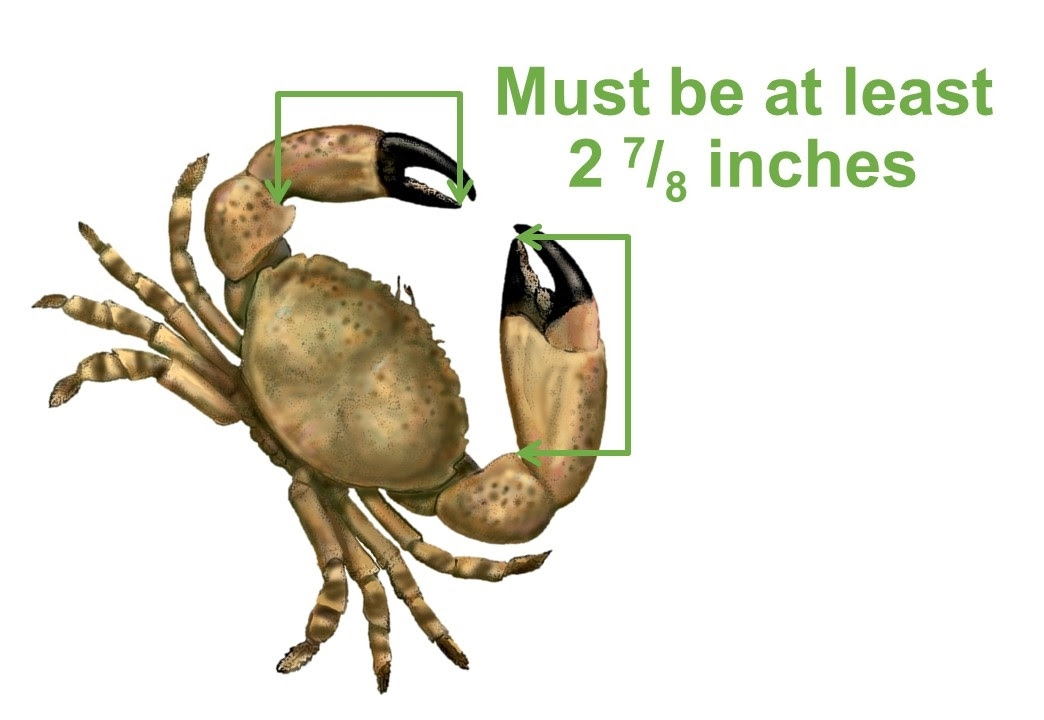Several recreational and commercial stone crab regulation changes go into effect in the next few weeks, just in time for the Oct. 15 season start date.
Florida’s stone crab fishery has experienced a long-term decline in harvest and is likely undergoing overfishing. FWC staff worked with stakeholders on these changes that are intended to increase the stone crab population and build resiliency in the fishery.
New regulations in effect this season:
- The minimum claw size limit will be 2 7/8 inches (an 1/8 inch increase).
- Possession of whole stone crabs on the water will be limited to two checker boxes, each up to 3 feet by 2 feet by 2 feet OR a total volume of 24 cubic feet. Checker boxes are used to hold crabs onboard a vessel before they are measured and legal-sized claws are removed.
- The season will now end on May 2.
- All plastic and wood stone crab traps will need to be outfitted with a 2 3/16-inch escape ring before the 2023/2024 season.
Recreational Trap Registration
As a reminder, recreational harvesters who are age 16 and older and fish with traps are required to complete an online, no-cost recreational stone crab trap registration and place their registration number on their traps before using them. To register, visit GoOutdoorsFlorida.com,
Upon completion, each person will receive unique trap registration numbers that must be included on each trap along with the owner’s full name and address. This information must be legible and must be permanently attached to each trap.
Other tips and regulations
Care should be taken when removing the claws so as to not permanently injure the crab.
Claws may not be taken from egg-bearing stone crabs. Stone crabs may not be harvested with any device that can puncture, crush or injure a crab’s body. Examples of devices that can cause this kind of damage include spears and hooks.
Recreational harvesters may take a daily bag limit of 1 gallon of claws per person or 2 gallons per vessel, whichever is less, and may use up to five stone crab traps per person.
Recreational and commercial traps may be baited and placed in the water Oct. 5, but claws cannot be harvested or possessed until Oct. 15. Traps that are not being fished should be removed from the water to avoid ghost fishing, a process in which marine species get caught in the trap for extended periods of time and are not harvested.
Stone crab regulations are the same in state and federal waters.
For more information on harvesting stone crabs for recreation, trap specifications, commercial stone crab regulations and licensing information, go online to MyFWC.com/Marine.
Keep up to date with saltwater and freshwater fishing regulations on your phone by downloading the Fish Rules app in the App Store or Google Play. Learn more at FishRulesApp.com.

READ MORE at myfwc.com

